Welcome to the new Traders Laboratory! Please bear with us as we finish the migration over the next few days. If you find any issues, want to leave feedback, get in touch with us, or offer suggestions please post to the Support forum here.
-
Content Count
166 -
Joined
-
Last visited
-
Days Won
1
Posts posted by suriNotes
-
-
Hi Mel_Function,
Thanks for your posts...
I am still in research mode for WWs.
From my knowledge, WWs are drawn from Major SwingHigh/SwingLows.
For me, critical points are (1) and (2) in that order... Few other authors mentioned (2) being important and pretty much trivialized (1).
Anyway, looking at your first chart FDAX, I am not sure if you are picking the SH/SLs or drawing trendlines from other pivots for convergence.
In your Second chart, an important point to note is, for the leg 2-3, the lowest point is considered a SL.... Here it is 16.15 bar. Also, the ES5m chart is a Buysetup. In my view, you only plot WWs after 1-4 are identified. Buy Only occurs at (5).
As I quoted before, I am still in research mode for WWs and may limit WWs with the Major SH/SLs only for now.
Regards,
Suri
Hi,found this thread yesterday and today I've searched and painted my first WW's in my Charts. Here is an german FDax Chart. Would love to hear your opinion and tipps what I can do better. Also I would like to hear how you handle your WW patterns in 5-10 minute Charts. Do you only trade the first WW pattern that forms or do you "rebuilt" it later in the trading day etc.
When does a WW pattern fails? Is an breakout a reason to re-built the WW setup? Questions over questions - thank you very much for your help!
(Added a second screenshot of the ES. Let me know what you think about this one as well.)
-
Hi perfectzero,
Thanks for your post...
I am in research mode for WWs' and trying to understand certain concepts.
I'll attempt to post my results soon.
WW rules seems to be subjective to an extent, but if you build specific rules to detect specific WW-type(s), you may have better success. Most patterns you have to do solid research with your time-frames, instruments to make them your own trading-ideas. Obviously, it does take time, effort and strong will.
Looking at your question, could you pl. post a chart??
Regards,
Suri
Hello Suri,What are you using to confirm the wolfe waves. From reading the website, it seems that a wedge isn't mandatory for a valid pattern (ETA). From looking at different examples, it seems that it sometimes gets subjective. How do you confirm the first wave (time frame?, bars?, etc). Is there a max number of bars that you use to confirm the subsequent waves (2, 3, 4 etc).
One example I bring up is that when I track a particular stock, I see a different pattern (bearish vs. bullish) when I look at daily, weekly and 5 min charts. Am I doing something wrong.
Thanks
-
Hi David,
Thanks for your post...
Recently, I have been seeing many WW patterns intraday and hence
started doing research. I have also seen many examples elsewhere of WWs as part of Falling/Rising Wedges/Pennants/Symmetric Triangles and Megaphones etc. But my view of WWs is little different than including in other patterns. The other patterns also have different rules to trade than WW.
I am going to continue my research but currently want to focus on WWs with a distinct starting point (1). In my view this point (1) should be a Key Swing Low/Swing High in the market structure and also have connecting lines converging at (1). WW should form after identification of 1,2,3,4 points. Then the typical ranges, barcounts etc should be checked for qualifying WWs...
Will try to build my rule set for WW's to trade then planning to write Auto-WW identification in TS.
I'll attempt to post my results here.
Regards,
Suri
-
-
Hi evolved trader,
See if this article I posted may be helpful in your quest...
Specially see TradePlanner calculator link in the article.
http://www.traderslaboratory.com/forums/f62/how-to-select-a-best-chart-4448.html
Regards,
Suri
Hey Guys and Gals,By the way, thanks everyone for their input. Every morning I wake up and meditate for an hour before the markets open. During that period I've realized that every morning I’d feel very nervous and overwhelmed about trading. I came to the realization that I had a set monthly target of a dollar figure I was looking to hit. Around $1000- $1500 a day. I’m still trading “1 lot” until I reach a level where I match my systems performance. Basically to perform that I’d have to “squeeze” every ounce of profit out of the day and trade my system to a tee....perfectly. I have done this in the past but not on a consistent basis.
So now what I’m thinking is to set a daily target of $250 a day when I think of that I don’t have the feelings of doubts fears and anxiety. I have a goal to average this daily target for the next 30 days, just to gain the feeling of consistently earning money every day in the markets. Then move it up to $300, $400, $500 ect.
Thank all for the input,
Ryan:)
-
Here is the same X5 pattern chart on 610 Tick of @ES.
The price-swing ratios are pretty identical (should be) but
the number of bars may be different.
In Tradestation's RadarScreen, I cannot compute my
BarInfo analysis (Num. of Bars, Avg. Bar Range) for
a Volume Chart (no options provided in RS).
I'll watch in real-time next few days
and see if 610T chart and 10000 shares
chart produce the same X5 patterns, then I may stay
with my 610T Chart.
Here is a similar box-range Renko chart showing
X5 pattern structures.
Regards,
Suri
-
Hi OAC,
Today I plotted X5 patterns using 10000 shares of @ES chart.
Here is the pic.. I'll watch next week or so and let you know if
they have an advantage.
Regards,
Suri
Suri,Tim Morge, the Median Line expert uses 10,000 volume bars for the S&P.
And our local expert, Steve46 uses 2400, 10,000 volume bars for his pattern recognitions.
Do you find any value in volume bars in your work with Harmonics ?
Thanks and Welcome Aboard
-
Hi OAC,
Thanks for your post.
I have never picked up the concept Over/Under balance from Bryce Gilmore or Robert Miner's books. Perhaps I'll now..
Thanks for your tip.
Regards,
Suri
My second question is whether the overbalance and underbalance concept in regard to symmetry as practiced by Robert Miner, Bryce Gilmore, etc, can be applied to Fib specific Harmonic patterns ? -
Hi OAC,
Thanks for your welcome!!
I trade Tick charts (eg: @ES 610T) and watch 5m and Daily Charts. But all my trading decisions are only made on 610T (SINGLE time-frame). And also I use similar range/box size RangeBars and Renko Charts in TS (use for confirmations of patterns etc.)
I have studied Volume and built Volume based Systems/theories in my past life but currently I do not use any volume concepts/theories for trading. Recent VSA theories looks interesting though...
Volume bars may have merit but I will stick to my Tick Bars (the Topic of my How to Select Chart-Time Frame Post...).
Given that, Patterns form/fail in all time-frames and in all market instruments. I do not know if any conventional (TICK, Volume or Time) bars have any advantage on other when detecting patterns. The theory may be different for Range/Renko/3PLB type of charts since each of the prices (O, H, L, C) are derived from actual traded O,H,L,C prices.
Regards,
Suri
Suri,Tim Morge, the Median Line expert uses 10,000 volume bars for the S&P.
And our local expert, Steve46 uses 2400, 10,000 volume bars for his pattern recognitions.
Do you find any value in volume bars in your work with Harmonics ?
Thanks and Welcome Aboard
-
Hi Carl,
Thanks for your post.
I have been working with Harmonic Patterns about 8-10 years out of my 13+ years of trading. Pattern trading is my primary way of trading and in my view Harmonic Patterns are very efficient way and offer great risk/reward ratios to trade patterns with Time/Price confluence theories as you mentioned. My primary patterns are ABCs and X5 patterns (All 5-point patterns Gartley/Butterfly etc...)
These discussions could be very elaborate but few pioneers to mention are:
Gartley, Garrett Williams, Robert Miner, Scot Carney, Larry Pesavento, Bryce Gilmore etc.
Regards,
Suri
I've been working on research for several of the patterns and looking at other patterns. I've been looking at time and price completion trying to evaluate the standard accepted values to see if there are better ratios that are seen more often.I hope to create a better indicator for identifying the patterns from all of this. I'm interested to hear your experiences.
Cheers,
Carl
-
-
-
How to Select A Best Chart Time-Frame for your Trading Style
By Suri Duddella, September 09, 2008
Please send your comments and suggestions via pm.
Introduction
Many day-traders use 5 minute, 15 minute, 233 Tick, 610 Tick, 1500 volume etc. chart time-frames for short-term trading. Few traders know why they use the time-frames they use for their trading but many traders have reasons like 'It fits my trading style', 'John X uses this time-frame', 'I like how it looks' or 'It is a Fibonacci Number' etc.
Trading harmonically with your style and personality may greatly improve your trading results. If you plan to scalp the markets, trading 60 minute ES chart may not give you enough trading frequency to be able to successfully scalp 1-3 point moves. If you are a swing trader and trying to focus on 89 tick chart you may be impacted by market noise and presented with too many false signals. Ideally you want to select a time frame which fits your trading style to filter out market noise yet provide enough market resolution to make enough quality trades to meet you daily goal. So, how do you determine this time-frame?
Knowing how long a trade requires (average time) between entry and exit will help avoid exiting a trade too early. Allowing trades enough time to meet their profit objectives will often improve win-rates and reduce over-trading. The use of smaller time frames tends to have more bars and therefore requires greater number of entry and exit decisions. More decisions often lead to more anxiety and mistakes. Hence, using a proper chart time-frame will help you make fewer yet more successful trading decisions thereby improving your trading confidence.
In my view, traders should focus and trade a single chart time-frame which fits their trading style. It can be TICK, VOLUME or TIME-bars. They could focus on multiple time-frames for analysis if they wish, but they should focus and use a single time-frame to trade and should NEVER switch to another time-frame in the middle of the trade.
Here is an analytical approach to help traders define a proper time-frame for themselves. It may not be a perfect method but it will give traders insight into what activity levels (eg: Win-Rate, Number of Traders, Trade-Size) needed to meet their trading goals. This method is best used iteratively in a what-if fashion to help create a new or validate an existing trading plan. Traders who intend to scalp for a smaller profit even with a high win-rate will be surprised to learn how many trades are required to make a respectable daily goal.
Approach
Traders should ask some inward-bound questions like 'What is my goal?'
Am I a 'Scalper/Day-Trader', 'Swing-Trader' or 'Investor'? What instruments should I trade? Eminis? (ES, YM, NQ, ER2...) or Stocks or FX?. What is my trade-frequency and manageable risk/reward to achieve my profit objectives?
I am going to present a daytrader's scenario trading Eminis (ES, YM, NQ) with
short-term profit objectives (1-3 pts) to derive a best TICK chart time-frame to trade.
First, I will present three different modules to collect chart data and what-if analysis data. In the end, all this data will be combined and presented some conclusions.
Please note these are What-if scenario's/tools that you can work and improve to maximize your goals. You can also derive the same for Time or Volume charts.
1.Bar Internals
Build a Spreadsheet or RadarScreen layout to determine BarInternals. Then compute for each market instrument (@ES.D, @NQ.D) and for each time-frame (55 tick, 233 tick, 610 tick, 987 tick) the Bar Internals. Only use Regular Trading Hours for these calculations.
The Bar Internals include:
Avg. Number of Bars in a Reg. Trading session (3-days of data)
Avg. Time for Each Bar
Avg. Range for Each Bar
When computing Avg. Time/Range of each bar, you may want to consider
removing the lunch hours.(11.30 am-1.30 pm EST).
Looking at the average number of bars column in above graphic, 55 tick @ES.D chart produces over 2500+ bars in a single day (RTH). Each 55 tick bar takes about 10 seconds to complete. If you were to make a trade decision at the end of each bar, you will have to make 2500+ decisions (at 10 seconds interval) in the entire trading day. That is a daunting task and humanly impossible to make even 5% correct decisions consistently. So, if any one claiming to trade 55-tick @ES chart, run-away from them. A 610 tick relatively produces lesser number of bars (232) resulting in lesser number of trade decisions.
2. A Trade Planner (What-if Calculator)
A What-if tool is built to compute how many trades a trader may need to make in a single-day to achieve his daily goal (in Dollars, ex: $1000/a day) using any market instrument (Ex: ES) of traders choice with a win/loss ratio (60, 70, 80%...) and a contract size (2, 5, 10…). It will build a trading-plan based on trader’s daily goal, market instrument, number of contracts and average win-ratio.
For example:
A $1000 a 'Daily goal’ trading @ES
Number of Contracts: 2
Commission per Contract: $6
Win/Loss Number: 70 (for 7/10 winning trades)
Target: 3 pts
Stop: 2 pts
This What-if calculator results in a trade-plan outlining 'Make X Number of Trades, using N-Number of Contracts' to achieve your $ GOAL. It will show the details of Wins, Losses and commissions etc. Experiment with your own data and compile this information.
TradePlanner:
http://www.surinotes.com/etc/tradePlanner.cfm
Trade Plan
The above graphic details a Trade plan to trade 3 ‘ES’ contracts per trade and set 3 pt profit targets and 2 pt stop loss setup. With a win-ratio of 70% a trader needs to make at least 10 trades to achieve $2000 profit target. It also shows the Gross Profit (after commissions) and Loss details.
3. Build a Simple Proxy Strategy
The purpose of this proxy strategy is to compute how many trades exist in each chart-time frame during a single trading session to reach traders goal using 'Target' and 'Stop loss' (in points).
Note: Do not make this a complex strategy. Write as simple as possible.
The idea behind this strategy is once we know approximately how many possible Travel Range (Target+Stoploss) trades exist in each time-frame, we can see if a trading methodology fits into that chart-framework (time-frame, range, time etc.).
Write a simple strategy to BUY next bar's OPEN (if you have no market position) and place your 'Target' and 'Stop Loss'.
Example:
if (marketposition = 0) then // Not in the Market
BUY next bar OPEN;
SetStopLoss(StopLoss);
SetProfitTarget(Target);
Run this strategy on each-time frame of chart and compute how many trades exist in a single session and percentage of profitable trades.
The above strategy produces above Data.
In each time-frame the strategy is resulted in
Number of Trades,
%of Profitable Trades
Number of Profit Trades
ProfitTrades Per Day
Avg. Number of Bars for Each Trade
For example, on @ES.D 610Tick chart, had 197 trades in 3-day time-period
with 43.15% profitable. Average Number of trades per day is 28.34 trades and
Average Number of Bars to complete the trade is 5.
Results/Conclusions
A combined view of Time/Tick chart relationship is presented from the above data of Bar Internals and Proxy Strategy data. From the Trade Planner, if you have a daily goal of $2000 trading @ES 2 contracts, you may need to trade 10 trades with 3 pt profit target with 2 point stop loss. That means, your trade is travel range is about 5 points. So, given the combined data, a 987 tick may not work since its travel range is less than 5 points for a winning trade. The next chart-time frame is 610 tick that has 6.2 pts travel range. This 610 tick chart may work as it produces the trade in 3.5 to 6 bars (4-6 decisions) with a win travel range of 4.34 to 6.2 pts. The average time for each trade is between 280 seconds to 401 seconds. Comparing the same with 233 tick, it has a higher travel range of 6.1 pts to 8.7 pts range. It also requires 7.7 to 11 bars for each trade an average.
As you can see from the above exhibit, given the goal to maximize the profitability and reduce the number of decisions i.e., bars, trading 610 tick time-frame makes more sense. This chart time-frame produces enough travel range, has more than 10 trades to reach the daily goal ($2000) with given a win-ratio (70%) and Target/Stop ranges. Also, it suggests a trader should wait at least 280 seconds to allow each trade to reach profit/loss range.
Of course, you may want to conduct this analysis using a proxy trading strategy for your trading style. This may not be perfect model as Bar Internals and market dynamics change regularly, but it provides a frame-work, analytical approach and reality-check to select a best chart time to trade.
-
This thread has very valuable information but I want to address
FFTrader's question in a new post.
I recently presented a free seminar on my research
about the Tick/Time frame relationship and 'How to Select Best Chart Time-Frame for Trading Styles'. This research is presented from a
short-term traders (intraday) perspective using Tick charts and E-Mini instruments (@ES, @YM, @NQ, @ER2) data...
I'll compile some recent data and post this topic in detail very soon.
Regards,
Suri
alleyb,I am a day trader and I trade the ES futures contract only (per CME/GLOBEX). Currently I am scalping with real money and experimenting with hold a trade with paper money. I look at previous support/resistance and Value Area mostly but also try to collaborate with Fibonacci numbers, moving averages, candle patterns, momentum and swing indicators, etc. My risk management is 2.25 points max and 1.50 points min and if I have two loosing trades in a day I quit immediately. I do not know how long I should stay in a trade but this OTF question will help me in that regards.
Thanks.
-
Thank you James and others for your kind words and
inviting me to the TL Forums.
I have been a TL member for a while but will be soon participating
in the forums discussions and trading topics... I do believe TL is a great
forum where many serious and professional traders participate
in excellent discussions and share ideas/concepts.
I am sure most of you know that I am Chart Pattern based trader
and I participate in Eminis Trading intraday and trade US Equities and
Commodities Swing Trading (short-term, 1-5 days).
I am planning on discussing some of my trading methods and concepts
on TL Forums and would love all of you to participate with an open-mind.
Even though I have been trading for 13+ years full-time, I learn many
things everyday.
It would be great to meet all of you.
Thanks again for inviting me to the TL Forums.
Regards,
Suri Duddella


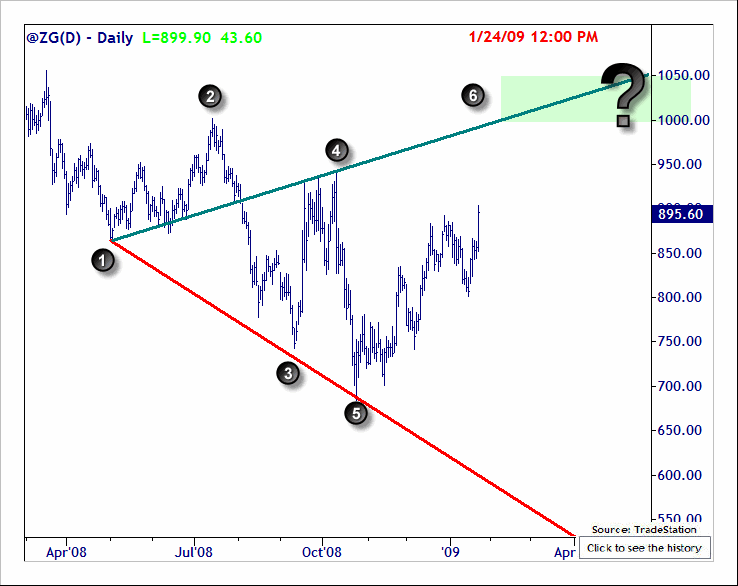
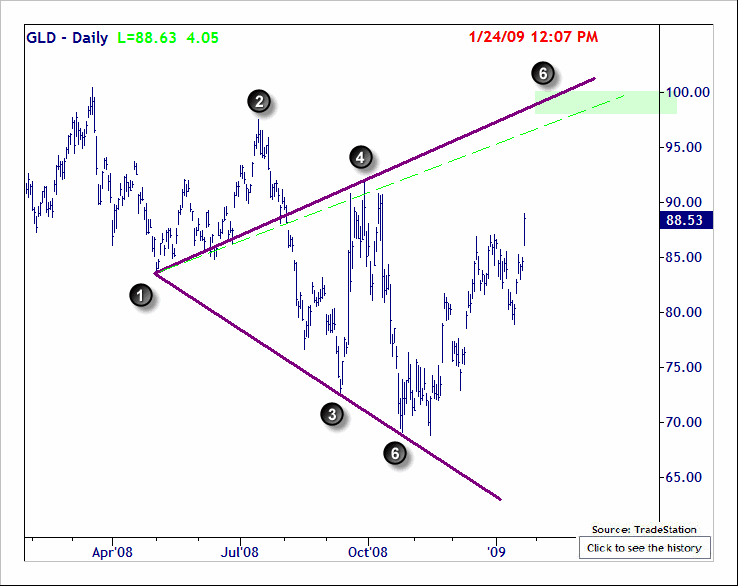

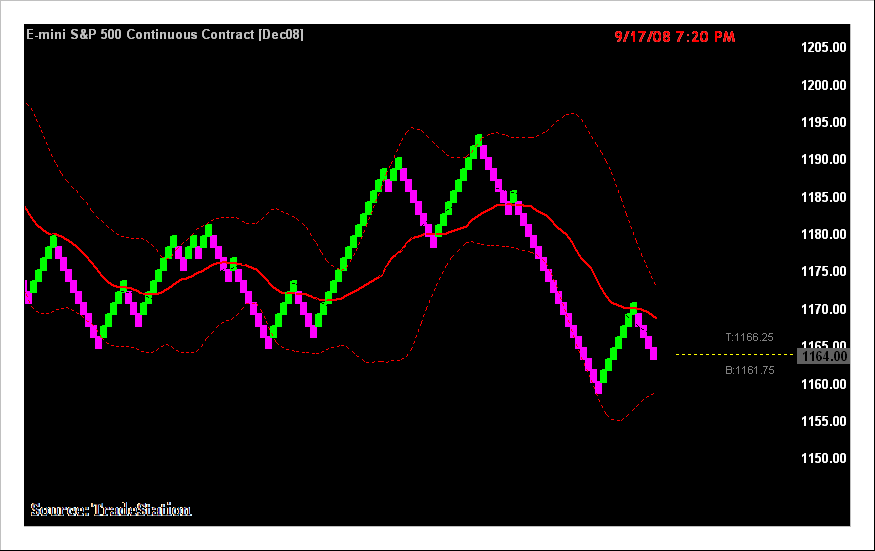
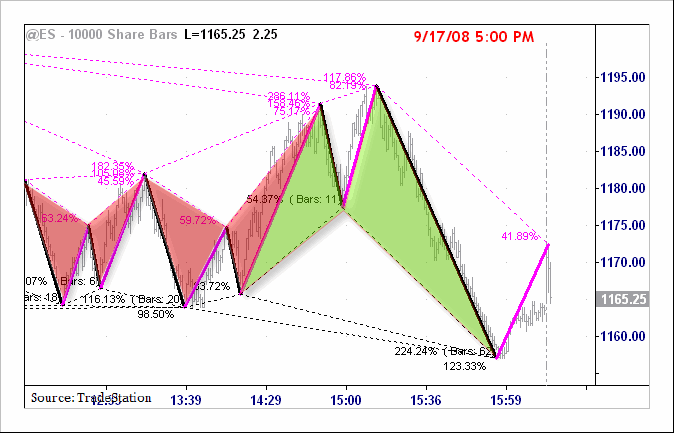
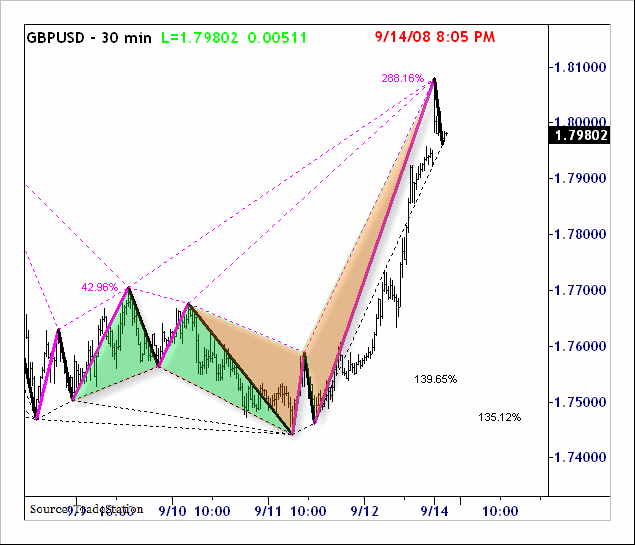
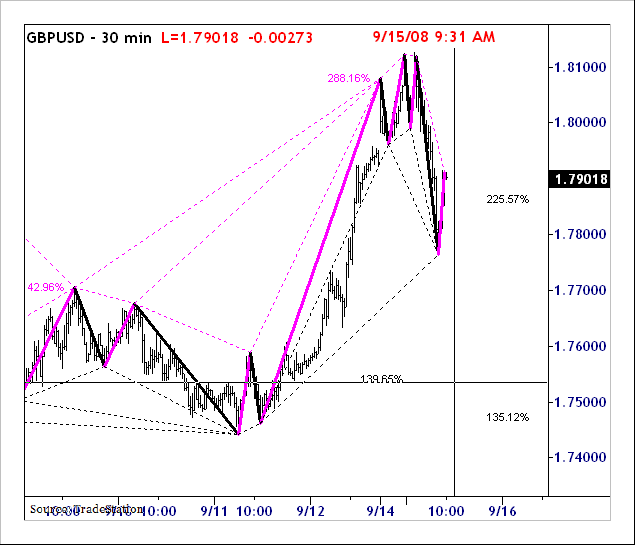
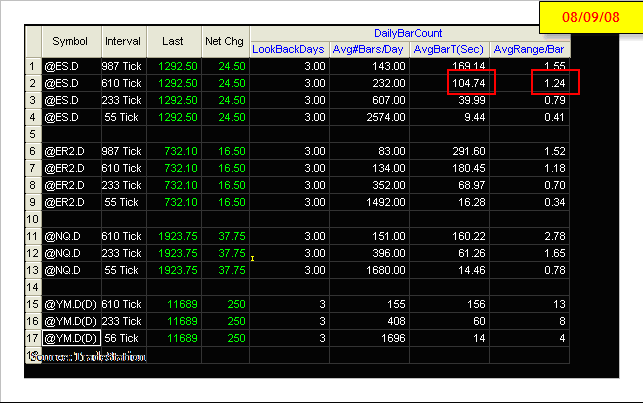
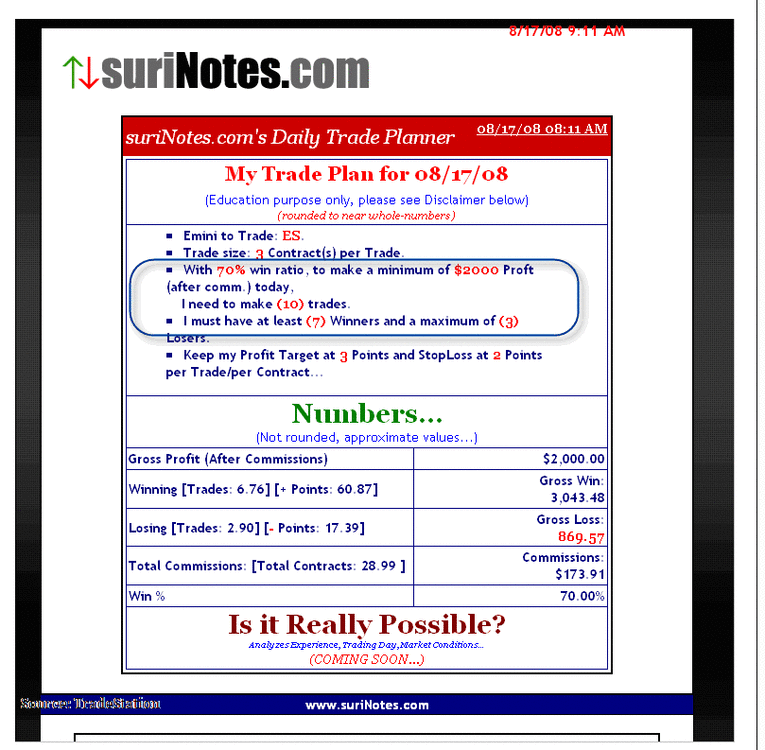
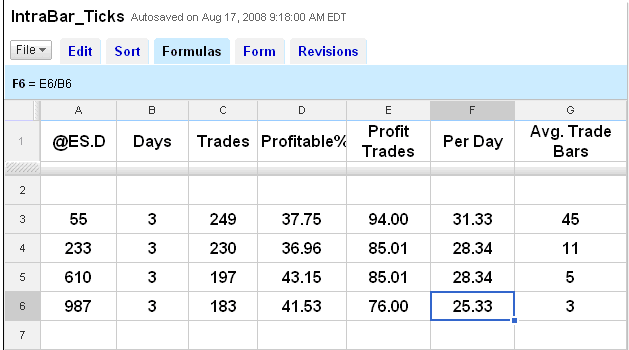

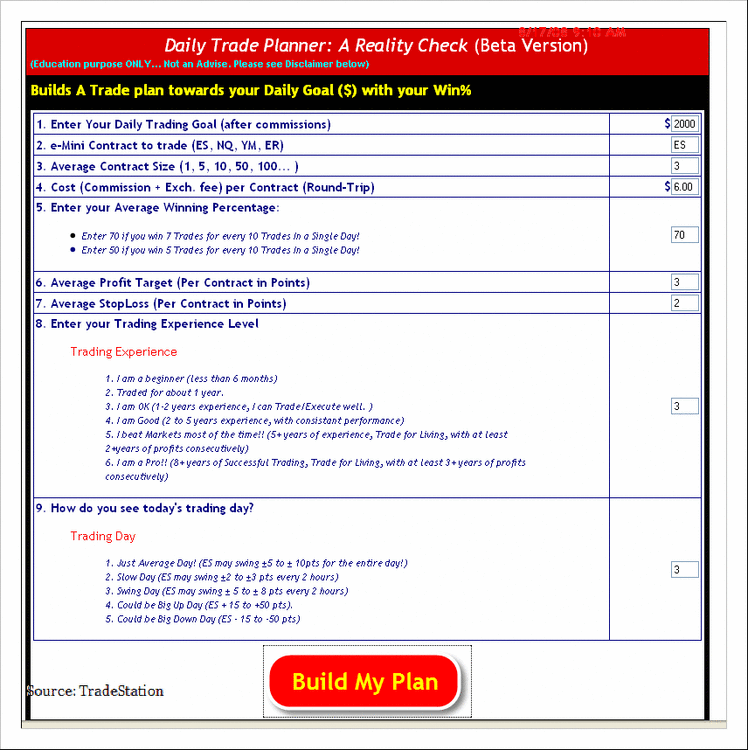
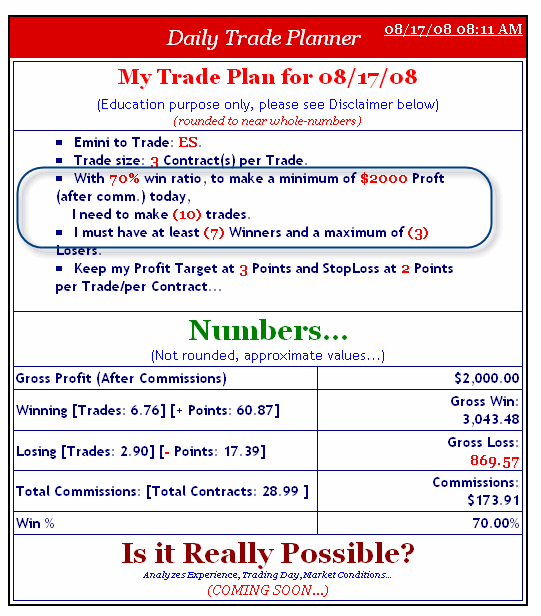
Wolfe
in Market News & Analysis
Posted
bubba,
here is the same NQ chart redrawn (in 610Tick)
let's see if it works.
regards,
Suri